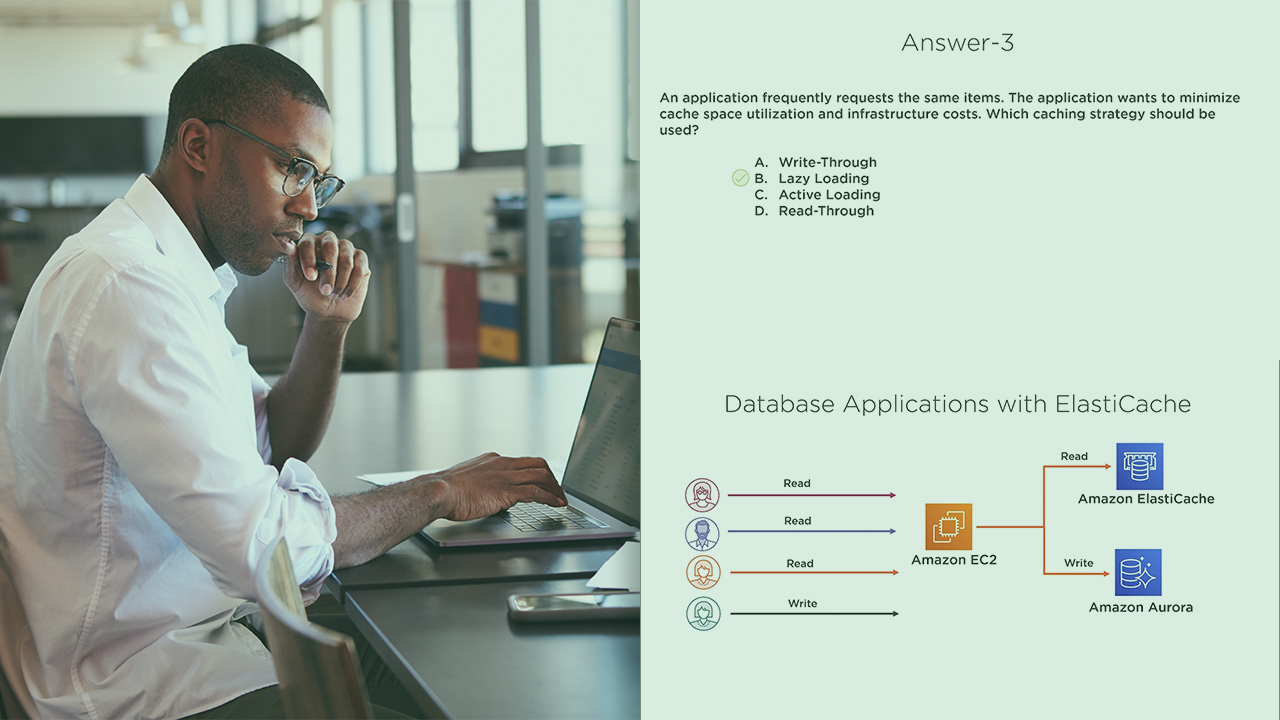- Course
Amazon ElastiCache: Best Practices
This course will teach you best practices for designing scalable, highly available, and highly performant ElastiCache databases on AWS. This course will prepare you for the AWS Certified Database: Specialty (DBS-C01) Certification Exam.

- Course
Amazon ElastiCache: Best Practices
This course will teach you best practices for designing scalable, highly available, and highly performant ElastiCache databases on AWS. This course will prepare you for the AWS Certified Database: Specialty (DBS-C01) Certification Exam.
Get started today
Access this course and other top-rated tech content with one of our business plans.
Try this course for free
Access this course and other top-rated tech content with one of our individual plans.
This course is included in the libraries shown below:
- Cloud
- Data
What you'll learn
Amazon ElastiCache is a fully managed in-memory data store compatible with Redis and Memcached. In this course, Amazon ElastiCache: Best Practices, you’ll learn key features of ElastiCache, along with how to analyze requirements to design ElastiCache solutions. First, you’ll explore how to design responsive, scalable, and highly available ElastiCache databases. Next, you’ll discover migration strategies. Then, you'll dive into backup restore and automated deployments for ElastiCache. Finally, you’ll learn how to optimize database performance and secure your database. When you’re finished with this course, you’ll have the skills and knowledge of an AWS database architect needed to answer questions from the ElastiCache domain of the AWS Certified Database: Specialty (DBS-C01) Certification Exam.

